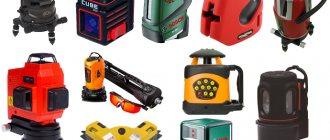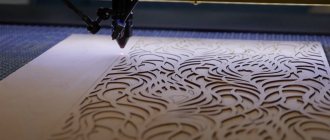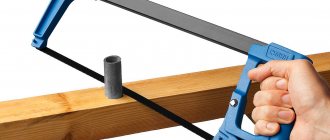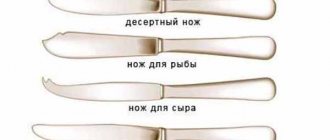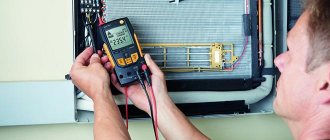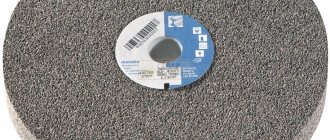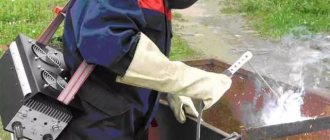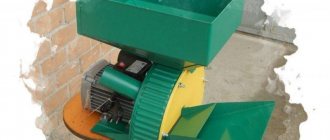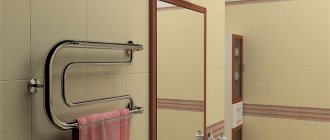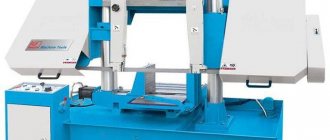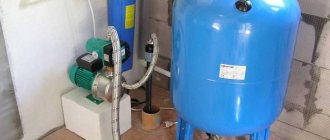How to choose a knife for a meat grinder
Using an electric meat grinder, you can very quickly complete work that would take a long time when processing food manually. Modern models of meat grinders differ from their predecessors in durability and reliability. But the knife in the device deteriorates much faster than other parts of the device. This is due to the fact that when cutting food and turning it into minced meat, a large load is placed on it. Therefore, when choosing an electric meat grinder model, pay attention to its knife.
Quality of material and method of knife manufacturing
First of all, look at the quality of the material from which it is made. Its durability depends on this. The knife can be made of hardened steel or cast iron. These types of materials are the most durable and are designed for long-term use. Therefore, such knives can maintain the sharpness of their cutting edges for a long time. Knives are made in different ways: forging or cold (hot) stamping.
Forged products are generally much stronger, but they are heavier and more expensive than stamped ones. There are both cast knives and knives coated, for example, chrome. Although it is difficult to determine the quality of metal by eye.
Most likely, you can rely on the fact that a more popular brand will equip its meat grinder models with better quality knives than other manufacturers.
Knife blade shape and cutting efficiency
In addition to the material used in the manufacture of the knife, the shape of its cutting blades is of great importance. If the edge of the knife is shifted forward from the vertical axis, then such a knife will cut by sliding. The efficiency of chopping food with such a knife is low. But when using it, the processed products will not stick much to the walls of the working chamber. This means that the cross-section of the chamber will not narrow, and the meat grinder will not need to be disassembled and cleaned often.
Modern models of devices are equipped with saber-shaped knives. They glide better than other forms of cutting edge, so they cut much better.
The crescent-shaped knife works on the “spatula” principle, that is, it spreads the twisted product into the body of the device in front of its grate. Because of this, after about fifteen minutes, a dense ring of products accumulates in the working chamber of the auger near the grate and the cross-section of the chamber decreases. Therefore, meat grinders equipped with this type of knives need to be disassembled and cleaned more often.
Number of blades and product fraction size
Knives for electric meat grinders can have a different number of blades with cutting edges: from two to six. Mostly, four-blade knives are found in household meat grinders, and six-blade knives are used in industrial meat grinders. The required number of rays is indicated by the type of product being processed. If you need large pieces, then use two-bladed parts, and if you need smaller pieces, then use four-bladed knives.
Type of sharpening and mounting holes
The blades can be sharpened on one side (left-handed or right-handed) or on both sides (double-sided). The second option is the most convenient, since they can be placed on either side, and, therefore, they will be sharp longer.
The new generation of knives for meat grinders are self-sharpening knives. They are created according to an unusual principle - the inner surface is softer than the outer, and therefore wears off much faster. Because of this, the edge remains sharp for a long time until the knife noticeably wears off.
Different types of knives have different mounting holes. This feature of the knife depends on the shape of the auger used in this model. The holes are square (quadrangular), pentagonal and hexagonal.
Before replacing the knife in an electric meat grinder, be sure to look at the cross-section of the auger on which the knife and grid are installed.
Replaceable knife blades on new models of meat grinders
The most recent development is three- or four-bladed knives, sharpened on replaceable blades on both sides. They are made of high quality steel according to certain European standards. Unfortunately, they are produced only for Italian models of meat grinders. These meat grinders come with replaceable blades and a special key. Therefore, dull blades are easy to replace. But the disadvantage of such knives is their high price compared to other types. Models of Italian meat grinders with knives with replaceable blades are intended for semi-professional and home use. Their productivity ranges from one hundred to three hundred kilograms per minute.
As you can see, there are a lot of types of knives for meat grinders. They all have their own characteristics, pros and cons. To ensure that the user of a meat grinder does not get confused in the assortment of knives, companies equip their meat grinders with universal types of knives that are suitable for any model of their brand.
Existing types of knives that do not require sharpening
Self-sharpening knives, in addition to those manufactured using the above technologies, include products that do not need to be sharpened due to their design features. This is somewhat wrong, because their sharpness does not increase during use. It’s just that their blade has the necessary characteristics to remain razor-sharp for a long time. These include:
- knives with magnetic blade;
- ceramic products;
- knives with serrated ends.
It should also be noted that sharpening such knife products using a sharpener is strictly prohibited. During the process of forced sharpening, the teeth made of hard steel will be erased, and they will lose their technical and operational properties. In addition, intensive use of such bladed weapons for processing hard surfaces is also not recommended, since this can lead to chipping of the edge. The service life with proper care and use is quite comparable to conventional knives that require regular sharpening.
Magnetic layer
This type of knives cannot be sharpened for one simple reason - the blade is covered with a special metal layer, which includes a magnetic alloy. The surface of such a product remains sharp for a long time.
Sharpening a kitchen knife with a magnetic alloy is scary because the entire surface layer will be deformed and, to a greater extent, worn off. This will lead to rapid wear and loss of original sharpness.
Samura knife with a magnetic layer.
The price of such knives is much higher than conventional metal ones, however, their service life makes them very popular among housewives. At any rate, a magnetic alloy knife performs well in everyday kitchen tasks.
Ceramic knives
Another type of knives that do not require sharpening. They are made of ceramics and sharpened on special machines.
The positive aspect is their hardness; the blade is not much worse than a diamond-coated product, which is capable of cutting even the toughest products. But on the other hand, ceramics does not have increased strength and flexibility, so such a knife is easy to break if the blade is slightly bent. A fall from the height of the work surface onto a ceramic tile floor is equivalent to being hit with a hammer for such a product.
Wellberg Cook's ceramic knife.
When purchasing such a product, be sure to check for the presence of zirconium oxide, which allows for a slight increase in flexibility.
Serrated surface
Hard, wear-resistant steel is an excellent material for making kitchen knives. It has increased strength and protection against deformation, which makes this product popular in the modern market.
In some cases, a serrated edge is significantly superior to a straight edge; for example, serrated knives are better at cutting cheese and sausages. However, this edge approach is not suitable for all products.
Serrated knife Mora Fishing Comfort Scaler 150.
To sharpen a knife with a serrated edge, you will need a machine for sharpening kitchen knives, which costs a lot and is quite cumbersome. Therefore, sharpening such a product will have a significant impact on the budget; it will be easier to buy a new one or contact a specialist with specialized equipment.
Meat grinder knife: tips for selecting the right grate for household and industrial processors
In the process of preparing meat dishes, you often have to grind it and make minced meat from it. Previously, this was a labor-intensive process using a regular sharp knife. The advent of a meat grinder has made life easier in many ways.
However, the knives for this ingenious device still have to be sharpened or replaced when they become unusable and do not fulfill the duties assigned to them.
Over time, they become dull on the veins and cartilage found in the meat, and stop cutting it and turning it into a homogeneous mass. The minced meat becomes not of the quality required or gets stuck at the entrance to the grate and does not come out. The screw is unable to push through large, poorly chopped pieces of meat.
It is important to know how to properly sharpen a knife for a meat grinder and determine the moment when it completely fails and only replacing it is the optimal solution to problems.
Brief contents of the article:
Design features
The design of a manual and electric meat grinder is identical. Available:
- Body with a neck for storing pieces of meat;
- Screw (auger);
- Knife with mounting hole;
- A grid with a lid, with the help of which it is pressed against the end part at the exit of the finished minced meat;
- Handle or electric motor.
The only difference is that in the first case, the rotational movement of the screw is created by a person, in the second - by a motor placed in the device body and powered by a household network.
Also, the electric meat grinder is simply placed on the table, and it is ready to work. The mechanical one will have to be secured to the working surface using a special device included in its design, similar in principle to a clamp.
A standard four-blade knife for a meat grinder is the main working part. It is fixed on the auger, a grate is put on top of it, through which the finished chopped minced meat passes through when rotating and chopping the meat into small pieces.
Meat grinder knives are made from both stainless and regular steel. The first option is much preferable. They can also be made of cast iron.
Technology for the production of self-sharpening knives
The technology for making self-sharpening knives comes in two types. The first method is to use steel with different levels of hardness:
- the cutting edge is processed using laser technology - uneven microscopic notches are made on the surface of the blade;
- in places where the laser is exposed, areas of micromelting are formed, which cool naturally;
- The blade is completely amenable to hardening and subsequent cooling.
This technology makes it possible to obtain a cutting edge with alternating sections of metal hardness (strength) or with a “micropaw” effect. Knife professionals also call this technology the “cat sharp” effect because the small serrations and horny parts resemble a cat’s claws. Accordingly, during use, the wear of steel will be uneven - softer particles will fall out, and harder ones will remain in the form of microscopic teeth. The more such teeth are formed during operation, the sharper the knife will become and the better the quality of cutting products, ropes and other materials. This is the effect of self-sharpening of the knife.
Dull-resistant kitchen knife.
The second way to create self-sharpening tools is to have a very thin cutting edge made of a harder metal or other material than the main part. Due to this, during the use of the tool, the softer metal is worked off, exposing the hard cutting part.
Types of knives for meat grinder
Meat grinder knives are classified according to the shape of their working part (petals) and the method of making the base. In numerous photos you can see various models and configurations of shredders produced by manufacturers, differing in appearance and service life:
- Forged;
- Stamped;
- Knives with a square base, 4 or 6 corners;
- Sabre-shaped;
- With a cutting edge shifted from the central axis;
- Crescent;
- Single and double sided.
Basic spare parts for meat grinder
Mechanical and electric meat grinders have similar cutting parts, consisting of two parts:
- rotary cutter with blades;
- fixed mesh knife, which is also called a grid.
Knife materials
The cutting surfaces of modern meat grinders are made of stainless steel, stainless steel or tool carbon steel.
The wear resistance of a knife for an electric meat grinder is increased by coating it with a special alloy that contains chromium and cobalt with the addition of tungsten or molybdenum. The alloy gives strength and long service life to the part without sharpening.
Expensive self-sharpening knives made of improved tool steel are used in industrial meat grinders. They are quite expensive and it is not economically feasible to use them in household appliances. A household meat grinder with a stainless steel cutting unit will function properly for 1-2 years without replacement.
Types of cutters
Movable cutters for meat grinders differ:
- by the number of blades;
- according to the shape of the blades;
- according to the configuration of the hole for attaching the knife to the auger.
Cutters for household meat grinders often have 4 blades. This number of blades is ideal for preparing minced meat for cutlets and meatballs. The shape of the blades can be straight or curved. Knives with curved blades cut wires more easily and prevent them from wrapping around the auger, which makes the shaft easier to operate and extends the service life of the device. Cutters with double-sided sharpening will last longer than single-sided ones made of the same material.
Cutters for industrial meat grinders are distinguished not only by a wide variety of blade shapes and sizes, but also by the manufacturing method: they are most often not stamped, but forged and self-sharpening. The number of blades varies from 2 to 8. The shape is straight, curved and crescent-shaped . Knives are often equipped with replaceable blades.
Self-sharpening forged blades made of tool steel can also be selected for a household meat grinder; for this you need to know the size and configuration of the cutting hole, as well as the dimensions of the blades.
The mounting holes have the following shape:
- square;
- rectangle;
- hexagon.
The sizes of the holes also vary, so you need to know the exact parameters of the mounting location of the device for which the knife is selected.
Cutting meshes
The second part of the chopping block of the meat grinder is the grid or mesh knife. The performance of the unit and the quality of the minced meat obtained depend on the number of holes and the sharpness of the cutting edge. Household appliances are most often equipped with three grids:
- A disk with holes with a diameter of 7-10 mm, which is used in the production of minced meat for homemade sausages. This grid is also used when grinding hard cheeses and dried fruits.
- A universal disk with holes 4-6 mm in diameter. It is indispensable when obtaining minced meat for cutlets, meatballs and meatballs.
- A grid with small holes with a diameter of 2.5-3 mm. Using this disc, minced meat is obtained for preparing baby food, pates, meat soufflé, as well as fillings for pies and pancakes.
Some meat grinders, often industrial ones, have discs with two or three large holes. Such grates are suitable for finely cutting meat, for example, for preparing beef stroganoff.
If the meat grinder is equipped with only one disc, this is not a reason for frustration. It is easy to select additional grilles, knowing the size and configuration of the mounting hole.
Correct installation and operation
Problems may arise with the installation of a single-sided knife with a flat and convex part. When this is done incorrectly, the meat grinder will simply clog.
Such a knife is always installed with the flat side to the grate and is put on the auger with the mounting hole. Double-sided can be installed on either side. It will work this way and that way!
To ensure that the cutting edges of the shredder last longer, follow the following recommendations:
- Large and hard pieces with tendons, bones and cartilage can break the blades of the knife. The meat needs to be cleaned of all this.
- When chopping vegetables and fruits, you need to make sure that there are no bones that fall into the meat grinder during operation.
- At the end of the work, the knife is washed well and dried. Without soaking, so as not to damage the metal coating.
- Avoid overloading, do not put meat in large portions;
- When a knife becomes dull, it needs to be sharpened. You can do this yourself if you have the appropriate equipment and skills, or you can turn to a professional.
Meat grinder knife systems
All professional devices for chopping meat are divided according to the type of knives into two systems: Enterprise and Unger . Moreover, the second of them is divided into two more subsystems - semi-Unger (or Unger 3) and full Unger (Unger 5). The most well-known to a wide range of consumers is the Enterprise system, used in the production of not only industrial, but also household devices for preparing minced meat. Distinctive features of both systems are the mounting holes of the knives: in the Enterprise system the mounting hole is square, in the Unger system it is close to an oval.
Enterprise system
This is the simplest and most affordable design, which consists of a screw, a one-sided knife, a grid with holes of different diameters and a clamping nut. This system ensures minimal load on the motor with relatively high performance. The main disadvantages of the mechanism: • the impossibility of grinding low-quality raw materials: offal, coarse meat with veins, frozen raw materials (the Enterprise system is recommended for processing boiled meat, fish and tenderloin); • the impossibility of using fine grids (and, accordingly, obtaining finely ground minced meat) during the first pass of minced meat. Meat grinders with a set of knives of the Enterprise type are recommended for use in small catering establishments with low productivity of the processed product. At the same time, in accordance with current standards, meat must be processed twice to obtain minced meat.
System
The Unger 3 (half-Unger) system consists of an auger, scoring and double-sided knives, final grid and clamping nut. It provides high quality grinding of meat of any variety. When using such a mechanism, it is possible to use final pate grids (with holes 2-3 mm in size) already during the first grinding. It is not difficult to distinguish knives for the Unger system from knives for the Enterprise system: the first of them have mounting holes that are close to oval in shape, and the second are square. The Unger 3 system is less dependent on the type of raw material processed than the Enterprise. In addition, it ensures a balanced load on the meat grinder motor during operation. The only significant drawback of the Unger 3 is the inability to use small-diameter grates when processing the coarsest types of meat. Purchasing a semi-Unger type meat grinder is considered a universal solution for most catering establishments with average volumes of minced meat production. Anyone who plans to purchase a meat grinder should remember that the certification sticker of the machine indicates the electrical power consumed by the motor. And the rated power developed by the engine at the maximum permissible load is indicated on the packaging or body of the meat grinder.
Unger system
This is the most expensive design, which consists of a sequentially installed auger, a scoring grid, a double-sided knife, a large intermediate grid, another double-sided knife, a fine final grid and a clamping nut. This system ensures a high level of grinding of any type of meat. Unger 5 allows you to obtain the necessary grinding of meat in just one pass (for the first grinding, you can use final pate grates with a hole diameter of 2-3 mm). If it is necessary to obtain a fine grind, you can also remove the fine grid and knife from the system, replacing them with an intermediate ring. The main disadvantage of such meat grinders is the high load on the motor and reduction gear. This feature causes rapid wear of the gears, as well as overheating of the motor even during short-term operation. Therefore, the most famous manufacturers of meat grinders of this type equip their machines with more powerful engines and cooling systems. Unger 5 systems are used primarily in meat processing plants and large catering establishments. The use of such machines makes it possible to reduce meat processing time by almost half and use raw materials of any quality.
When is it time to sharpen your knife?
When working with hard, small cartilage and tendons, the grinder sooner or later becomes dull and stops performing its duties. Its edges are rounded. It will not be able to sharpen itself on the surface of the grate, as the manufacturers promise!
To sharpen a meat grinder knife, you can use a whetstone or emery cloth. And, of course, instructions so you know how to do it.
A perfectly sharpened knife saves time and energy! The meat is chopped, not chewed. And - if it is a manual meat grinder, then the process of obtaining minced meat goes much faster.
When the first signs of “poor performance” are visible, the moment comes when you need to stop working the meat grinder and start sharpening the knife.
We take everything we need and do the following:
- Place the knife flat on No. 1 sandpaper or a sharpening stone;
- Using circular movements of the petals, we evenly sharpen the cutting edges;
- We perform the same operation with the grate;
- Rinse under water;
- Dry;
- We apply the knife to the grate and see if there is a gap between them;
- If there is one, we sharpen both further until they fit tightly together;
- A smooth, shiny surface is a sign that the process was successful;
- When we use an abrasive stone, we sharpen it under running running water.
Thus, sharpening a knife should not be particularly difficult. If this process turns out to be difficult, then it is best to entrust it to those who know how to do it. An incorrectly sharpened knife will not work better!
Methods for sharpening knives
Knives for household meat grinders, especially stamped ones, need to be sharpened periodically. This must be done immediately, as soon as the productivity of the unit has decreased, the number of strands and films that began to be wound on the auger has increased.
Cutting surfaces are sharpened in special workshops, but you can do it yourself if you have a sharpening tool, the skill to work with it and a little free time.
When sharpening, several methods are used:
- On the grindstone. The stone is generously moistened with water and circular movements are performed first with a knife and then with a disk, pressing the side that comes into contact with the cutter blades to the stone. Movements are made in one direction, evenly pressing the part being sharpened. After finishing sharpening, you need to fold both elements of the cutting block and check for the absence of clearance between them.
- Using sandpaper. The sandpaper is fixed to a piece of plastic or plexiglass with glue and sharpened in a circular motion in one direction. First, use medium-grain paper for sharpening, and then use fine-grain paper for polishing to a mirror finish.
- Using a meat grinder sharpening kit. The set includes two abrasive discs. First, insert a disk instead of the grate and sharpen the cutter, then insert another disk instead of the cutter and sharpen the grate. To sharpen blades, 30-50 shaft revolutions are quite enough.
You can sharpen cutting parts on a special sharpening machine, but only if you have experience and knowledge of basic safety requirements. It is better to take dull knives to a craftsman, and periodically sharpen the cutting parts yourself by hand.
How to choose the right electric meat grinder for your home? Popular manufacturers
When choosing an electric meat grinder for home use, it is worth considering several parameters and characteristics. Their availability and combination in certain models may vary depending on use cases and expected loads. In this case, the cost of the device does not always justify its relevance and ease of use.
Choosing an electric meat grinder solely based on price is fundamentally the wrong approach.
Even for little money you can choose a device that meets all the requirements and needs of the buyer.
The article talks about what you need to pay attention to when purchasing, what types of electric meat grinders are available on the market and which one is better to choose.
At the end of the article there is a list of the most popular manufacturers and models.
Page navigation:
Which electric meat grinder is better to buy and how to choose the right one
Which meat grinder is better to buy for the home and how to choose it correctly, what to look for and which model is more reliable - these are the questions that face the user when the decision is made to purchase such a household appliance. The selection criteria in this case will be the following indicators:
The selection criteria in this case will be the following indicators:
- technical characteristics (power, performance, weight, dimensions);
- functionality;
- availability of attachments and additional functions;
- reliability;
- price.
Having compared these indicators for different models, having decided on the purpose and frequency of use, you can choose a meat grinder that meets all the requirements for it, as well as in accordance with personal preferences for a particular brand of the product manufacturer.
What is an electric meat grinder?
The electric meat grinder consists of the following parts:
- frame;
- chopping knife;
- grid and fixing disk;
- screw shaft;
- product receptacle and pusher;
- additional elements and attachments, depending on the model.
The product placed in the receiver enters the auger and moves towards the knives.
Here it is pressed tightly against the grate and chopped with a knife to a size that allows you to push the product through the holes.
The entire grinding process takes about 5-10 seconds.
How to choose: parameters and characteristics
In order to figure out how to choose the right electric meat grinder model for your home, you should pay attention not only to its cost, but also to a number of other important characteristics.
Power and performance
The higher the power rating, the easier the device copes with veins and tough pieces of meat.
The power of models on the market ranges from 400 to 2200 W.
All devices with higher ratings are industrial, the use of which at home is unjustified.
Powerful electric meat grinders can easily cope with any meat or other product.
However, their noise level and energy consumption are significantly higher than low-power devices.
This indicator is closely related to power: the higher it is, the greater the productivity, and vice versa.
performance range varies from 0.5 to 2.5 kg per minute .
If the description of the meat grinder model indicates different productivity at the same power, then you should give preference to a device with higher productivity.
This electric meat grinder will cope better with tough meat and will wear out less under load.
Reverse
The presence of reverse means that the motor of the device can rotate in the opposite direction.
This function will greatly facilitate the release of the knife and auger from the wires wound around them.
After starting the reverse, the auger begins to rotate in the opposite direction and all the cores come out of the loading hole, where they can be easily removed.
Models without reverse would have to be disassembled and cleaned manually.
Overload protection
as protection , stopping the operation of the device in the event of overheating or excessive loads.
For example, if a bone gets into and gets stuck in the auger, or the engine heats up during long periods of continuous operation.
There are several options for implementing the protection function :
- locking using a safety bushing. When overheated or the load increases, it bursts and stops working. This method is used in most models;
- plates that are in a closed state when the motor is running. If the engine stops, the flow of electrons affects the plates, they open and the power is lost. After disconnecting from the network, the circuit returns to its original position and does not interfere with operation. This protection option is much less common in devices;
- thermocouple This component is present only in certain models and is an addition. The thermocouple measures the temperature of the motor and turns it off if it overheats. Since the electric meat grinder has other protection, the presence of a thermoelement is not a key parameter.
Testing meat grinders
The first mechanical meat grinder was invented by Baron Karl von Dres - the same one who invented the first “stepping” bicycle, without pedals, and in whose honor the self-propelled platform moving on rails was named a trolley. Following him, a similar design was proposed by the Austrian Peter Mitterhofer, wanting to make the work easier for his wife. The operation of a meat grinder is based on the rotation of an Archimedes screw (screw or screw shaft). Archimedes used a screw to convey water into irrigation channels, and the Baron used a screw to move meat from the neck, or bell, through a sharp knife to the grate. The size of the grate holes affects the quality of the minced meat. The disc with the smallest holes (3–3.5 mm) is excellent for preparing tender, smooth pates and soufflés. The middle grid, with holes 4.5–6 mm, is used for chopped cutlets and meatballs, for chopping vegetables, cheese and nuts. Using the largest grid, with holes 8–9 mm, it is easy to obtain minced meat for homemade sausages, as well as scroll through dried fruits and cut hard cheese. The first mechanical meat grinders in Russia began to be produced in the Chelyabinsk region, in the city of Kasli. In the manufacture of the meat grinder, only pure, food-grade tin was used, and many stages of production were performed manually. Therefore, Kasli meat grinders with the famous emblem - a horse rearing up - were highly valued not only in the USSR, but also abroad. Today, the grates and knives of domestic meat grinders are most often made of cast iron, and some body parts are made of aluminum. Imported appliances usually use stainless steel. Some parts of the case may be made of food-grade plastic, but there is nothing wrong with that. It is durable and must withstand the load on the body. Undoubtedly, the internal parts - auger, knives, grates - must be metal. It is preferable to make a tray for serving products made of metal - it does not form scratches and does not change color when in contact with products. Forged self-sharpening knives are better than stamped ones: they improve the quality of work and last longer. In addition to auger meat grinders, there are cutter grinders. They work on the principle of a coffee grinder: at the bottom of the container there is a rotating horizontal blade. Minced meat in such a meat grinder turns out juicy, tender and small, like pate.
Test In order to test the most popular auger meat grinders, we bought 7 kg of unfrozen second-grade beef, cut out the largest veins and, having cut the meat into medium-sized pieces, began preparing minced meat. A grid with holes of medium diameter was used. The meat was processed through all the meat grinders - albeit with different productivity. The devices turned out to be safe to use, lightweight and easy to assemble. We didn’t need the reverse function, which allows us to turn the meat grinder auger in the opposite direction - the “magnificent seven” did an excellent job with meat, small veins and films.
Moulinex ME651 ● Power – 1900 W ● Result – 1 kg of 2nd grade meat in 70 seconds. ● Number of grates – 2 ● Additional attachments – 5 drums for grating and slicing; 3 attachments (kebbe - for preparing thin sausages, for cookies, for homemade sausage) ● Number of speeds - 1 ● Reverse - yes ● Price - 7490 rubles. A multifunctional meat grinder that, at high power, works smoothly and evenly, without jerking or frightening hum. The meat grinder is equipped with a metal front panel - this is not only relevant, but also speaks of the strength and reliability of the device. The minced meat turns out excellent, almost like chopped by hand. Bosch MFW 1550 ● Maximum engine power – 1550 W ● Rated power – 500 W ● Result – 1 kg of 2nd grade meat in 90 seconds. ● Number of grilles – 3 ● Additional attachments – no ● Number of speeds – 1 ● Reverse – no ● Price – 4290 rub. The manufacturer of this meat grinder took an original approach to storing components: additional gratings are located on the rear panel in small open compartment shelves. An additional safety sleeve is included. The motor is not the most powerful, but the minced meat turns out homogeneous, a solid “four”, and it doesn’t take much time to prepare it. The disadvantage is that the neck is quite narrow.
Tefal ME 71013E ● Power – 1800 W ● Result – 1 kg of 2nd grade meat in 90 seconds. ● Number of grates – 3 ● Additional attachments – 3 (for cookies, kebbe, homemade sausage) ● Number of speeds – 1 ● Reverse – yes ● Price – 6499 RUR. The front panel of the meat grinder is made of stainless steel, which makes it reliable and safe to use. The design allows you to store all attachments in a special compartment. When “meeting” stringy meat, the motor does not work quite evenly, but this does not affect the quality of the minced meat - in our case, it turned out excellent: loose, of the correct consistency, with visible fractions.
Panasonic MK-G1800PRWTQ ● Power – 1800 W ● Result – 1 kg of 2nd grade meat in 50 seconds. ● Fastening – metal ● Drive – metal ● Number of grilles – 3 ● Additional attachments – no ● Number of speeds – 1 ● Reverse – yes ● Price – 9990 rub. The working mechanisms of this meat grinder do not use plastic - only high-quality steel. The threaded fastener is reliable and durable, the block for storing wires and components is thoughtful and convenient. The motor runs smoothly and quite quietly. Please note that the holes in the middle grid are actually quite small and the rolled meat looks less like medium-ground minced meat, and more like a homogeneous pate with a pleasant, smooth consistency. The functions of reversing and turning off the device are assigned to one button, which is not entirely convenient.
Vitek VT-1671 ● Power – 1600 W ● Result – 1 kg of 2nd grade meat in 60 seconds. ● Number of grates – 3 ● Additional attachments – 3 drums for grating and slicing vegetables, 2 attachments (for sausages and kebbe) ● Number of speeds – 2 ● Reverse – yes ● Price – 3990 RUR. The device is equipped with a motor protection system against overloads and overheating, has a very spacious tray, and has a thoughtful, functional design. There are many plastic parts, including fastenings, but the most important ones - the meat grinder head, drums, grates and knife - are made of high-quality stainless steel. When processing meat, the motor operates unevenly and jerkily, but the minced meat turns out to be properly chopped, crumbly, and of good consistency.
Braun Triumph G 3000 ● Power – 1500 W ● Result – 1 kg of 2nd grade meat in 150 seconds. ● Number of grates – 3 ● Additional attachments – 1 (kebbe) ● Number of speeds – 1 ● Reverse – yes ● Price – 5390 rub. What distinguishes this meat grinder from others is its very convenient tray. Due to the deepening, even the “wet” filling (bread soaked in milk or water, fried onions) will not create problems. Performance is not very high, despite the high power. As soon as films come across, the motor experiences difficulties. The minced meat lacks friability.
Kenwood MG700 Pro 2000 E xcel ● Power – 2000 W ● Result – 1 kg of 2nd grade meat in 30 seconds. ● Number of grates – 3 ● Additional attachments – 2 (kebbe, for homemade sausage) ● Number of speeds – 2 ● Reverse – yes ● Price – 9990 rub. Thanks to the all-metal muzzle, auger and blade, this meat grinder is strong, durable and reliable. The wide neck made of cast metal allows you to work with fairly large pieces of meat. A specially designed nut wrench facilitates assembly and disassembly of the meat grinder without the use of physical effort. The device produces excellent “loose” minced meat.
* Prices of online stores at the time of publication of the material
Popular manufacturers
Bosch Meat grinders from this manufacturer are of high quality and can even handle streaky and tough products. Popular models:
Moulinex. There are several models from this manufacturer on the market. All of them are distinguished by high performance and stylish design. Popular with buyers:
Kitfort. Models from this manufacturer have become widespread due to their high quality and relatively low cost. Among them:
Philips. A reliable and proven manufacturer of household appliances, presenting several models of electric meat grinders on the market:
- HR2709 Daily Collection;
- HR2723/20 Viva Collection;
- HR2710/10 Daily Collection.
Axion. A domestic manufacturer whose devices are equipped with the maximum number of attachments. Popular Axion models:
How to choose a meat grinder (2018)
Everyone knows what an electric meat grinder is and why it is needed. This kitchen appliance has firmly established itself in many kitchens - its reasonable price and incomparable performance with a manual meat grinder have led to the fact that electric meat grinders are everywhere replacing manual ones. But many people don’t even realize that with an electric meat grinder you can not only grind minced meat, but also squeeze juice, chop vegetables, cut cookies and stuff sausages - there are additional attachments for all this.
And, before going to the store for a meat grinder, it would be useful to understand not only what parameters are responsible for high-quality preparation of minced meat, but also what additional capabilities are hidden in it.
Electric meat grinder device
This kitchen appliance is designed quite simply. Inside the housing (1) there is a motor that rotates the meat grinder shaft through a gearbox. Most devices have a gearbox that is partially or completely plastic, and it is wear or breakage of the plastic parts of the gearbox that is the most common reason for a meat grinder to fail. In expensive models, the gearbox is made entirely of metal, and to protect the engine when wedged on the shaft, a safety clutch is installed. The auger (2) of the meat grinder is fixed to the shaft, and as it rotates, it pushes the meat through the meat receiver (3). The meat enters the meat receiver through the tray (4). At the end of the auger there is a knife (5) and a perforated steel disk (6), pressed with a clamping nut (7). The meat enters under pressure into the holes of the disk and is cut off by a moving knife. High-quality discs and knives of expensive meat grinders ensure easy cutting of meat without unnecessary deformation and low load on the engine - as a result, the minced meat is of higher quality and the productivity of the device increases. Budget models of meat grinders are often equipped with knives and discs made of cheap steel, which require frequent sharpening.
Characteristics of meat grinders
Power is one of the main parameters of a meat grinder, which directly affects its “omnivorousness” and price. Power is also related to performance, but not so clearly - two devices with the same performance can have power that differs by 1.5 - 2 times. But at the same time, a more powerful meat grinder will maintain the specified productivity for any quality of meat, and a less powerful one will show the rated productivity only on small, homogeneous pieces without veins and fat.
The parameters often provide two power values: peak (maximum, when the shaft is blocked) and nominal. The first is the maximum power that the meat grinder engine can produce. At this power, the meat grinder can only operate for a short time, literally a matter of seconds. Rated power is the normal operating power at which the meat grinder can operate for a long time. The maximum power determines how well the meat grinder will cope with stringy pieces of meat, while the nominal power mainly affects performance.
The greater the power, the less time you need to spend preparing meat before placing it in the tray.
You can put meat into a powerful meat grinder “indiscriminately,” but in a low-power meat grinder, stringy and fatty meat will force it to work at maximum power and may even jam. This is especially dangerous if the meat grinder motor is not equipped with overload protection - in this case, jamming of the auger or prolonged operation with increased load can lead to breakdown. Therefore, in order not to waste time separating veins, cartilage and fat from pieces of meat, it is better to choose a model with a power reserve - from 400 W nominal and from 1000 W peak.

